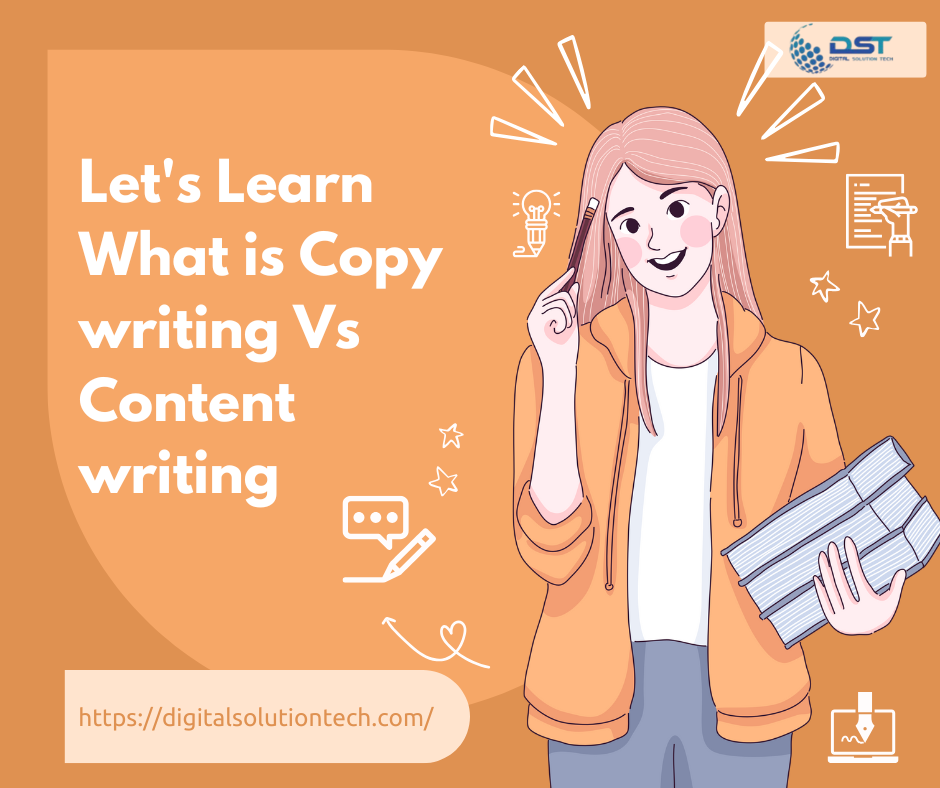In the world of digital marketing, two terms that frequently come up are content writing and copywriting. Both are essential for businesses to connect with their audiences, yet they serve different purposes and require different skills. While they may seem similar at first glance, understanding the distinction between the two can make a significant difference in how effective your communication efforts are.
What is Content Writing?
Content writing refers to creating informative, engaging, and valuable material aimed at educating, entertaining, or inspiring the audience. The primary goal of content writing is to provide value to the reader while maintaining the brand’s voice and message. This type of writing is usually longer and more in-depth, focusing on providing comprehensive information about a particular topic.
Examples of content writing include:
- Blog posts
- Articles
- E-books
- Guides
- Case studies
- Whitepapers
- Newsletters
Content writing seeks to foster a relationship with the audience by offering them something useful or interesting. It’s about building trust and authority on a particular subject. SEO (Search Engine Optimization) also plays a crucial role in content writing, as the goal is often to rank high on search engines. Keywords, meta descriptions, and other optimization strategies are employed to ensure the content reaches its intended audience.
For instance, a blog post about healthy eating habits might aim to provide readers with tips, recipes, or scientific insights. The objective isn’t necessarily to make a direct sale but to keep the reader engaged, inform them, and position the brand as an authority in the health space.
What is Copywriting?
On the other hand, copywriting is more focused on persuasion. The primary goal of copywriting is to motivate the reader to take a specific action, often linked to a business objective. Whether it’s buying a product, signing up for a service, or filling out a contact form, copywriting is designed to generate conversions.
Examples of copywriting include:
- Advertisements
- Sales pages
- Email marketing campaigns
- Product descriptions
- Landing pages
- Social media ads
- Headlines
Copywriting is about creating compelling, concise, and clear messaging that drives action. The language used in copywriting often appeals to emotions, triggers urgency, and highlights benefits, aiming to convince the reader that they need the product or service being offered.
For example, a product description for a new pair of running shoes may emphasize the shoe’s features, such as comfort, durability, and performance. The ultimate goal is to convince the reader to make a purchase. Copywriting tends to be shorter and more direct compared to content writing, focusing on the “call-to-action” (CTA) to guide the user toward conversion.
Key Differences Between Content Writing and Copywriting
- Purpose
The fundamental difference between content writing and copywriting lies in their purpose. Content writing is meant to inform, educate, or entertain, while copy writing’s primary goal is to persuade the audience to take action, such as making a purchase or signing up for a service. - Tone and Style
Content writing tends to have a more conversational, informative tone. It’s often longer and more detailed, offering the reader something of value over an extended period. Copywriting, on the other hand, is typically more concise and persuasive, designed to catch the reader’s attention quickly and urge them to act immediately. - SEO vs Conversion
Content writing is often optimized for search engines to help the content rank better in organic search results. This involves integrating keywords, maintaining an optimal length, and ensuring the content is discoverable. Copywriting, however, focuses on conversion—getting the reader to take the next step, whether that’s buying a product or signing up for a newsletter. - Audience Engagement
Content writing aims to build a relationship with the audience by offering valuable and relevant content over time. It’s more about nurturing the audience and keeping them engaged with the brand. Copywriting focuses on short-term actions, directly prompting the audience to make decisions.
Conclusion
Both content writing and copywriting are integral components of a successful marketing strategy. While content writing builds trust and authority, creating an informative base for audiences to engage with, copywriting directly drives conversions and business goals. Understanding these differences and how they complement each other can help businesses craft more effective marketing strategies that resonate with their target audience and drive meaningful results.
Contact Digital Solution Tech if you need any of these services:-
- SMM
- SEO
- SMO
- Web & App development and design
- Website Analysis
- Blogging
- Digital Marketing Strategies
Contact us via e-mail or visit our website https://digitalsolutiontech.com/






Leave A Comment